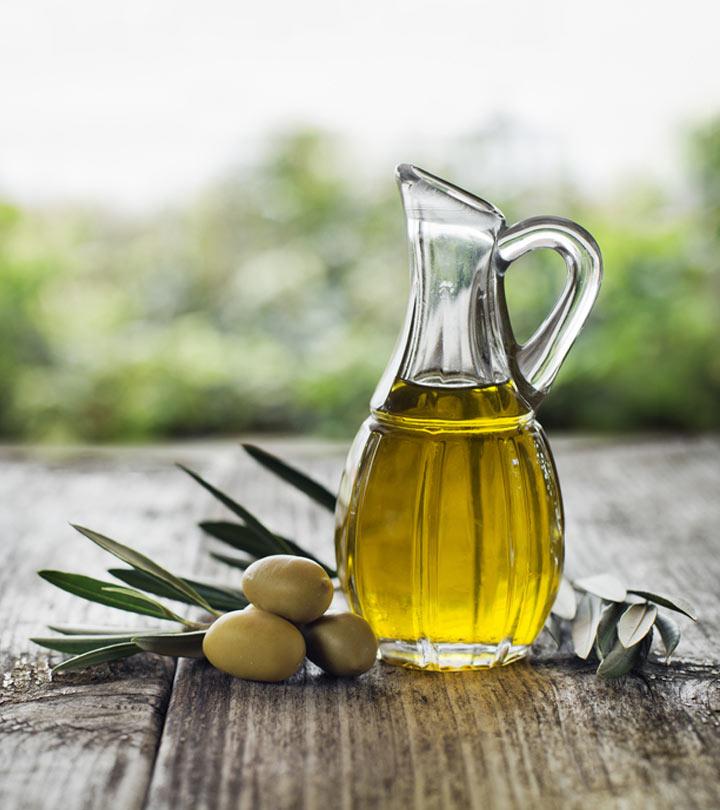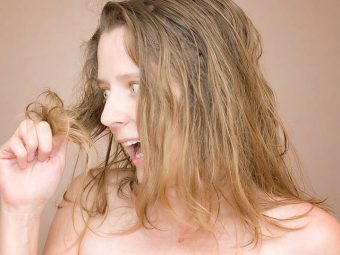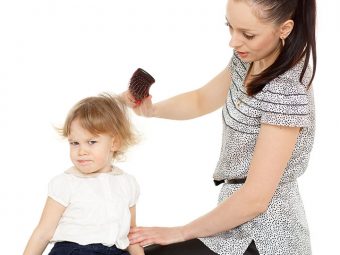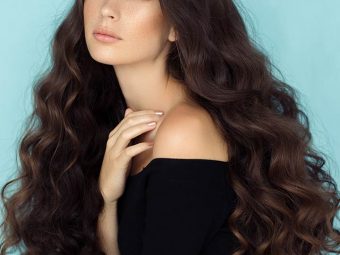How To Get Rid Of Head Lice Using Olive Oil
Understand how this oil may help you remove head lice at home effectively.

Head lice infestation, common in children, is a benign condition but an irritating and embarrassing one. However, anecdotal evidence supports using olive oil for head lice. So, how does it work against this contagious but harmless condition? Does this natural ingredient kill these tiny parasites or only help in removing them? Can olive oil be an effective alternative to OTC (over-the-counter) lice treatments that have several side effects? Well, this article answers all these queries and explores the best ways to use olive oil to eliminate head lice. Keep reading to find them out.
In This Article
Does Olive Oil Kill Lice?
No, olive oil does not kill head lice. But it lubricates the hair and facilitates the easy removal of lice and nits (lice eggs) from the hair and scalp (1). The oil is widely believed to act as a suffocating agent that can drown the lice. Further research is warranted to test this theory (2).
The exact mechanism of how olive oil can help eliminate head lice is yet to be studied. But several testimonials approve the use of olive oil for this purpose. Keep reading to learn the various ways you can use olive oil treat lice infestation.
How to Use Olive Oil For Head Lice Removal?
1. Olive Oil And Shampoo
What You Need
- Olive oil
- Clarifying shampoo
- Nit removal comb
- Paper towels
- Trash bag
- Blow dryer
What To Do
- Wash your hair with a clarifying shampoo to remove any product residue from your hair. This step is critical as the residue may otherwise reduce the effectiveness of olive oil.
- Liberally apply olive oil to your hair and scalp. Dividing your hair into several sections can ease this process.
- Tie your hair into a bun and put on your shower cap. Ensure the elastic of the shower cap is tight enough to let it sit securely on your head (to keep the lice from escaping).
- Leave the shower cap on for 4 to 6 hours.
- Remove the shower cap and comb the lice out with a nit removal comb. Clean the comb with paper towels at regular intervals. Dispose the paper towels once you are done.
- Wash and shampoo your hair twice after you are done.
- Divide your hair into sections and blow-dry close to the scalp on medium heat. This will kill the nits.
- Follow this routine 2 to 3 times a week until your hair is free from head lice.
2. Olive Oil And Eucalyptus Oil
Eucalyptus oil works as an antiseptic (3). Along with olive oil, it may help eliminate head lice.
What You Need
- 4 tablespoons of olive oil
- 15 to 20 drops of eucalyptus oil
- Shower cap
- Nit removal comb
What To Do
- Mix the olive and eucalyptus oils in a bowl.
- Apply the mixture to your hair and scalp.
- Tie your hair and put on the shower cap. Leave it on for 2 to 3 hours.
- Remove the shower cap and comb out all the lice and nits.
- Wash and shampoo your hair.
- Follow this routine thrice a week.
3. Olive Oil, Coconut Oil, And White Vinegar
Olive oil and coconut oil suffocate the lice and restrict their movement. Anecdotal evidence suggests that white vinegar may dissolve the glue that helps the nits stick to your hair shaft.
What You Need
- 2 tablespoons of olive oil
- 2 tablespoons of coconut oil
- White vinegar
- Shower cap
- Nit removal comb
- Anti-lice shampoo
What To Do
- Mix the olive and coconut oils in a bowl.
- Apply the mixture to your hair and scalp.
- Put on a shower cap and leave it on for an hour.
- Remove the shower cap and comb out all the lice and eggs.
- Wash and shampoo your hair.
- Apply the white vinegar all over your hair and scalp and leave it on for an hour.
- Comb out all the nits and wash your hair with theanti-lice shampoo.
- Follow this routine twice a week.
4. Olive Oil And Tea Tree Oil
A mixture of olive and tea tree oils helps eliminate head lice. Tea tree oil has insecticidal and insect-repellent properties (4).
What You Need
- 3 tablespoons of olive oil
- 1 teaspoon of tea tree oil
- 2 tablespoons of herbal shampoo (to dilute the otherwise harsh tea tree oil that may cause skin irritation)
- Shower cap
- Nit removal comb
What To Do
- Mix the olive oil, tea tree oil, and shampoo in a bowl.
- Apply the mixture to your hair and scalp and put on a shower cap.
- Leave it on for 30 minutes.
- Wash your hair with hot water and the herbal shampoo.
- Comb out all the dead lice and nits while your hair is still wet.
- Follow this routine twice a week.
5. Olive Oil And Sesame Seed Oil
Sesame seed oil has antibacterial and insecticidal properties (5). It may work in conjunction with olive oil to get rid of head lice and their eggs.
What You Need
- 1 tablespoon of olive oil
- 2 tablespoons of sesame seed oil
- Shower cap
- Nit removal comb
What To Do
- Mix the olive and sesame seed oils and apply the mixture to your hair and scalp.
- Put on a shower cap and leave it on overnight.
- Comb out all the dead lice the following morning.
- Wash and shampoo your hair.
- Follow this routine every day.
Key Takeaways
- Olive oil is said to lubricate your locks and suffocate and drown lice.
- While applying olive oil, make sure your hair is free from the residues of any other product.
- You can combine this oil with any other oil, ingredient, or product for better results.
In summary, olive oil can be used to manage, but not kill, head lice. Olive oil has a thick texture that coats the hair strands and makes it difficult for the lice to grasp them. This makes it easier to remove the lice from your head with a fine comb. Additionally, this oil suffocates the head lice. While more scientific research is needed to back the use of olive oil for head lice, there is a lot of anecdotal evidence on the internet and other platforms. Scroll up to learn how to properly use olive oil to manage a head lice infestation.
Sources
- Prevention and Treatment of Head Lice in Children
https://link.springer.com/article/10.2165/00128072-199901030-00005 - Home Remedies to Control Head Lice: Assessment of Home Remedies to Control the Human Head Louse, Pediculus humanus capitis (Anoplura: Pediculidae)
https://www.sciencedirect.com/science/article/abs/pii/S0882596304001393 - Commercial Essential Oils as Potential Antimicrobials to Treat Skin Diseases
https://www.ncbi.nlm.nih.gov/pmc/articles/PMC5435909/ - Insecticidal and repellent effects of tea tree (Melaleuca alternifolia) oil against Lucilia cuprina
https://pubmed.ncbi.nlm.nih.gov/21899953/ - Value addition in sesame: A perspective on bioactive components for enhancing utility and profitability
https://www.ncbi.nlm.nih.gov/pmc/articles/PMC4127822/












